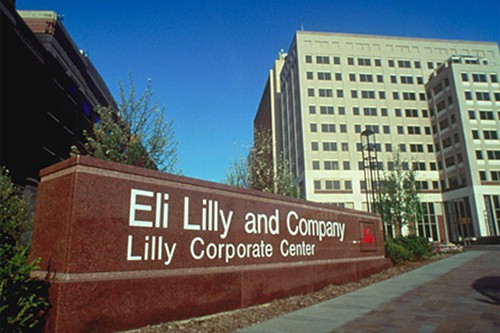
Eli Lilly has staked a claim to the plaque psoriasis market on the back of positive late-stage data for its ixekizumab candidate, throwing down the gauntlet to rivals Novartis and AstraZeneca/Amgen.
The pharma company says interleukin-17 (IL-17) blocker ixekizumab outperformed Pfizer’s tumour necrosis factor (TNF) antagonist Enbrel (etanercept) in a phase III trial, setting it on course for regulatory filings in the first half of 2015.
Ixekizumab works via the same mechanism as Novartis’ antibody secukinumab – which reported Enbrel-topping phase III data earlier this year – as well as Amgen/AZ’s brodalumab which has also cleared a late-stage trial and will have head-to-head data versus Johnson & Johnson’s anti-IL-12 and IL-23 antibody Stelara (ustekinumab) next year.
Lilly’s phase III data revealed that ixekizumab was significantly superior to Enbrel on all measures of skin clearance, with 31 to 41 per cent of patients achieving clear skin at 12 weeks, according to David Ricks, who heads the company’s Bio-Medicines division.
“These results give us confidence that if approved, ixekizumab could make complete resolution of psoriasis possible for significantly more people,” he said. In contrast, Enbrel achieved clear skin in just 5 to 7 per cent of patients.
Lilly’s antibody was given every two or four weeks in the study, and across the three studies in the UNCOVER programme it was found that the drug achieved a 75% reduction in the Psoriasis Area and Severity Index (PASI 75) in 78 to 90 per cent of patients.
Improvements in skin clearance measures were seen with ixekizumab as early as the first week when compared to either placebo or Enbrel, and continued through week 12, while “high levels of response were maintained through 60 weeks of treatment.”
“Moderate-to-severe plaque psoriasis can have a devastating life impact for patients,” continued Ricks. “Clear skin is their goal, but many patients are not able to achieve complete resolution using currently-available treatments.”
At the moment Novartis seems to be leading the race to bring an IL-17-targeting drug to market for psoriasis, as secukinumab has already been submitted for approval in Europe, the US and Japan and could be on the market early next year.
All the companies are trumpeting the ability of the drugs to achieve high rates of lesion clearance, but with no head-to-head comparisons it remains to be seen whether one or another has a clinical advantage.
Meanwhile, the three leading IL-17-targeting drugs will see stiff competition from Stelara – a blockbuster with sales of $628m in the second quarter – as well as Celgene’s orally-active phosphodiesterase 4 (PDE4) inhibitor Otezla (apremilast), which is already approved to treat psoriatic arthritis and was submitted for approval in plaque psoriasis last year.




